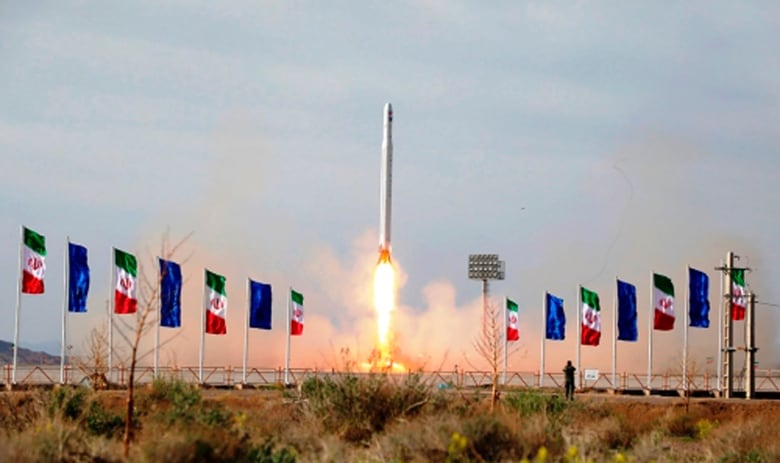With its new space centre, NATO seeks the ultimate high ground

It's not the Space Force you may have heard about. Still, NATO's newly announced space centre boldly takes the seven-decade-old institution where no international military alliance has gone before.
Most of its leading members and adversaries have sought individual advantage in the final frontier over the decades. And while the European Space Agency is a collective body, its civilian mission and its politics are inarguably different from those of NATO.
That difference was on display this week as NATO defence ministers, meeting online, put the final pieces in place for the new centre, which has been in the works for a couple of years.
"The space environment has fundamentally changed in the last decade," said NATO Secretary-General Jens Stoltenberg.
"Some nations, including Russia and China, are developing anti-satellite systems that could blind, disable or shoot down satellites and create dangerous debris in orbit."
NATO "must increase our understanding of the challenges in space," he said.
Unlike U.S. President Donald Trump's much-hyped plan to make the Space Force a separate branch of the U.S. military, the North Atlantic alliance has been careful to present its space centre not as a "war fighting" arm but as something purely defensive.
A 1967 international treaty commits 110 countries, including the United States and Canada, to limiting their use of space to "peaceful purposes" alone and prohibits the basing of weapons of mass destruction (nuclear bombs, for instance) in orbit. It further prohibits the militarization of the moon and other celestial bodies.
Stoltenberg has insisted that alliance activities will be in line with international law.
The rising threat of war in space
That's an important point for Paul Meyer, adjunct professor of international studies in international security at Simon Fraser University in B.C. He warned in a recent policy paper for the Canadian Global Affairs Institute that the "prospects for armed conflict in space appear more likely than they have been since the days of the Cold War."
Meyer said world leaders should think hard about what role — if any — arms control could play in avoiding a war in space.
"Diplomatic solutions are not being pursued, despite the fact that irresponsible state conduct in space can ruin it for everyone," he said Friday.

NATO has no satellites or space infrastructure of its own — but many member nations do and Stoltenberg said the alliance will draw on their expertise in setting up the new centre.
Almost all modern militaries rely on satellites. In any major conflict between NATO and either Russia or China, the orbital communication and navigation grid would be the first piece of infrastructure to be hit.
Not only does NATO need satellites for surveillance, reconnaissance and communications, an increasing number of military operations are being targeted from space.
A good example is the 2003 U.S. invasion of Iraq, during which 68 per cent of airstrikes employed smart bombs guided by lasers and satellites.
Those "eyes in the sky" are also important for defence against ballistic missiles and (naturally) weather forecasting.
Diplomacy and deterrence
Dan Coats, the former U.S. director of national intelligence, warned Congress almost two years ago that China and Russia have trained and equipped their military space forces with new anti-satellite weapons.
Those warnings have not been limited to the Trump administration. In the spring of 2019, Norway accused Russia of "harassing" communications systems and jamming Norwegian Armed Forces GPS signals.
Last spring, the NATO space centre reported that Moscow had test-fired a satellite-killing missile.
Frank Rose, a senior fellow at the Brookings Institution, said in a recent online policy analysis that outer space will need to be "mainstreamed" within NATO when it comes to planning and operations.
He also argued that the alliance will need to find a way to "incorporate diplomacy into any eventual strategy."
Meyer agreed and noted in his October 2020 policy paper that Canada is largely absent from any meaningful debate on the militarization of space.
The Global Affairs website, he said, contains outdated material, is full of banal, non-specific references and is largely devoid of Canadian content.
"Pity the Canadian citizen who wishes to understand where our country stands on this troubling issue of outer space security," Meyer wrote.
It's not clear what sort of contribution Canada might make to the new NATO space centre.
In a statement, Defence Minister Harjit Sajjan said it's important for Canada's allies to develop a strategy that "ensures a peaceful use of space while protecting ourselves.
"Canada has been a leading voice in NATO about the importance of space for the Alliance and we remain committed to working with our Allies and partners to prevent space from becoming an arena of conflict."

